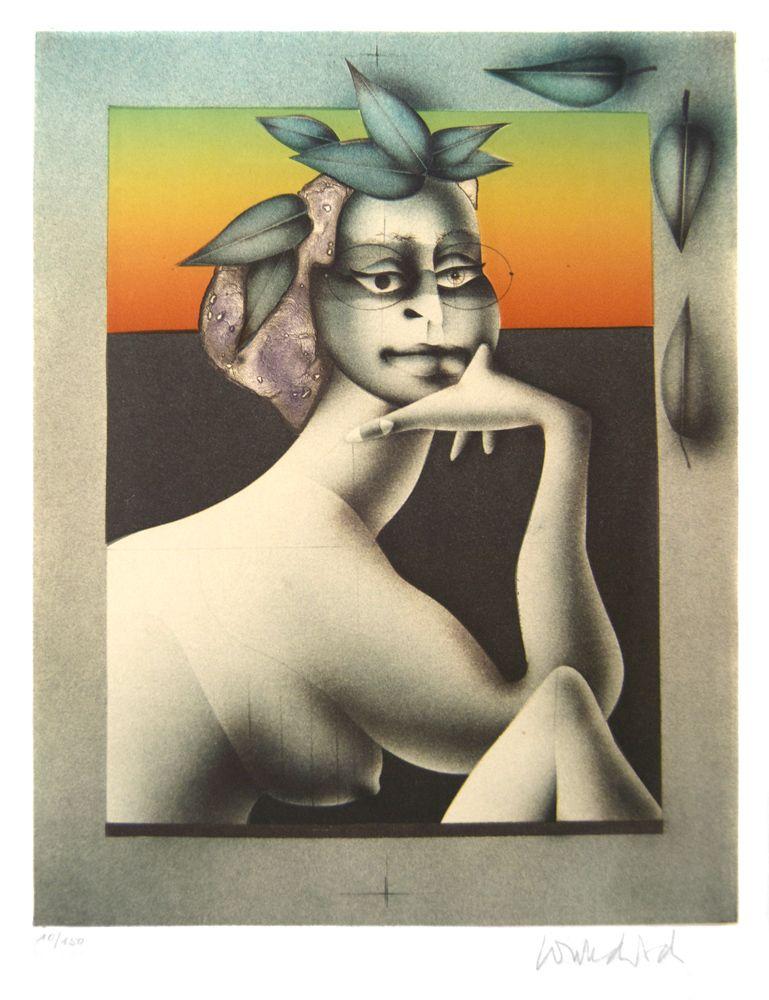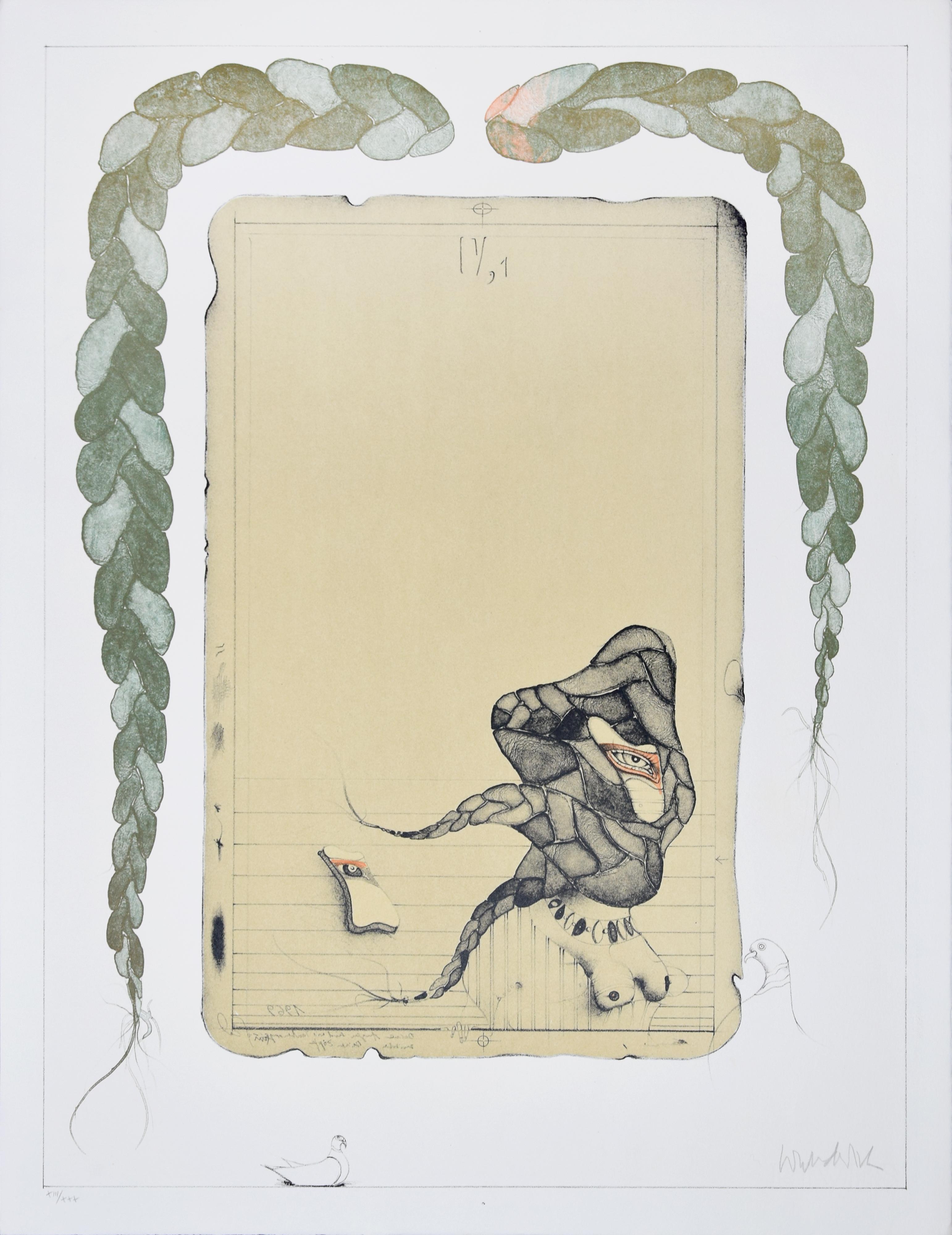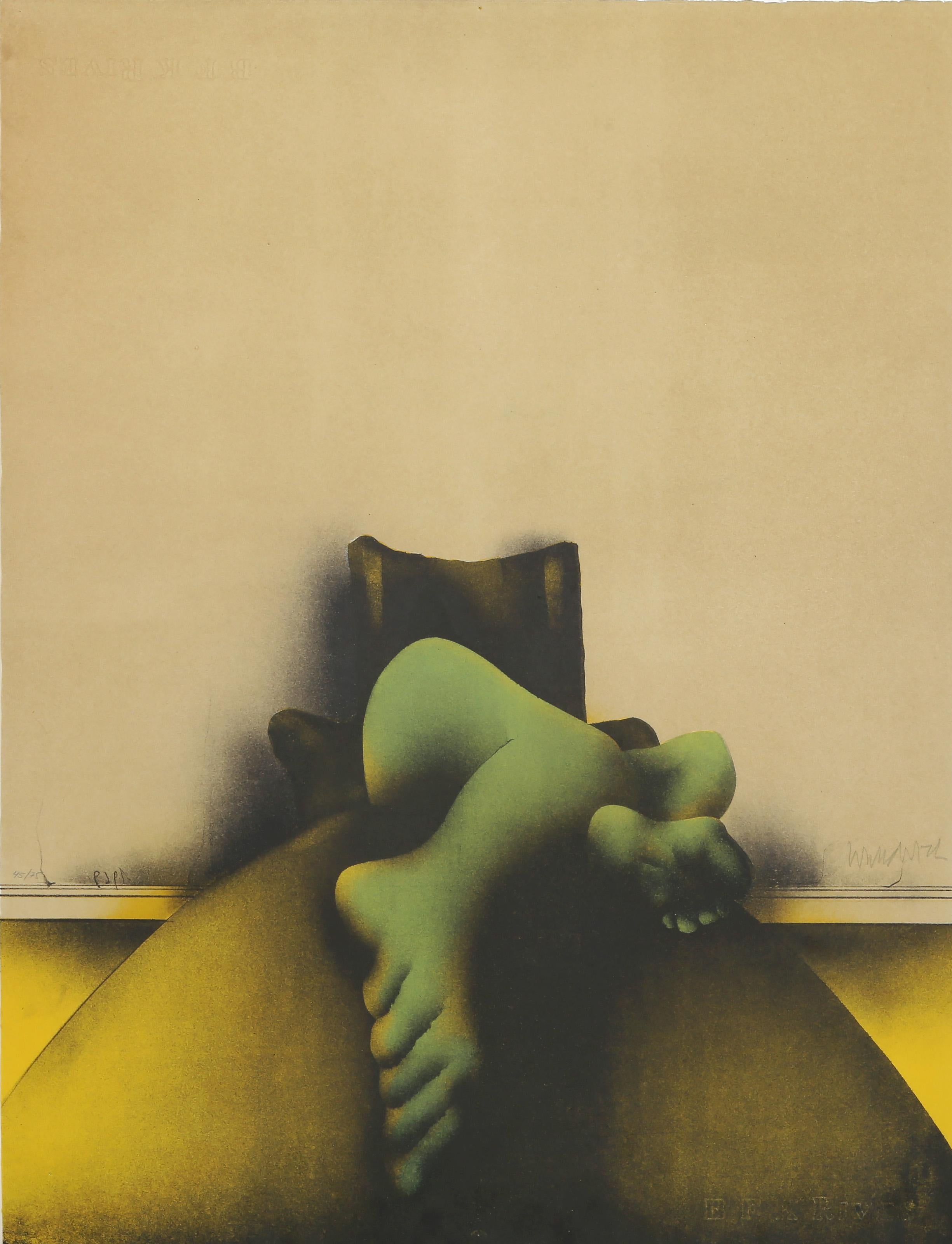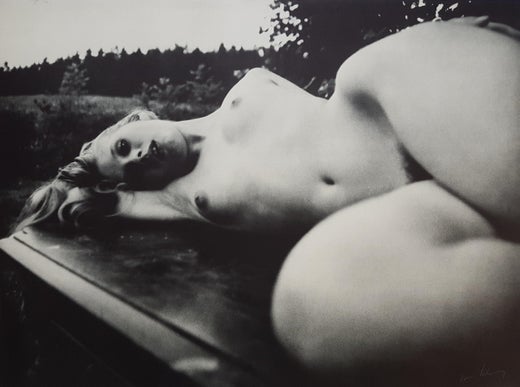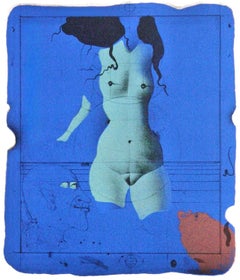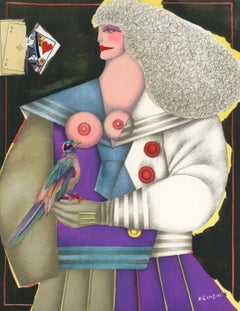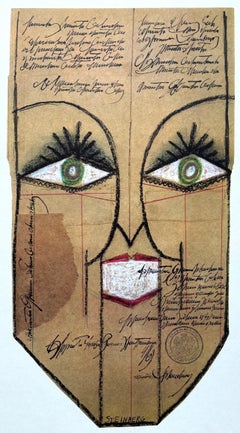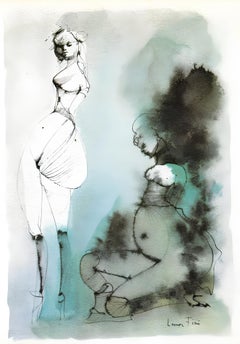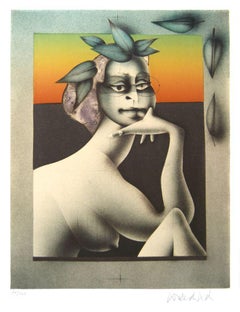This exquisite lithograph by Paul Wunderlich (1927–2010), titled Frau mit Lorbeer (Woman with Laurel), from the album XXe Siecle, Nouvelle serie, XXXIXe Annee, No. 48, originates from the 1977 edition published by Societe Internationale d'Art XXe siecle, Paris, and printed by Mourlot Freres, Paris, 1977. Frau mit Lorbeer exemplifies Wunderlich’s unique synthesis of surrealism, symbolism, and classical form—an elegant, introspective meditation on beauty, power, and transformation rendered with the artist’s signature precision and sensual restraint.
Executed as a lithograph on velin paper, this work measures 12.5 x 9.75 inches. Unsigned and unnumbered, as issued. The edition exemplifies the superb craftsmanship of Mourlot Freres, Paris.
Artwork Details:
Artist: Paul Wunderlich (1927–2010)
Title: Frau mit Lorbeer (Woman with Laurel), from the album XXe Siecle, Nouvelle serie, XXXIXe Annee, No. 48
Medium: Lithograph on velin paper
Dimensions: 12.5 x 9.75 inches (31.75 x 24.77 cm)
Inscription: Unsigned and unnumbered, as issued
Date: 1977
Publisher: Societe Internationale d'Art XXe siecle, Paris
Printer: Mourlot Freres, Paris
Catalogue raisonne reference: Rheinsberg, Paul Wunderlich: Das graphische Werk 1948–1978, illustration 544.
Condition: Well preserved, consistent with age and medium
Provenance: From the album XXe Siecle, Nouvelle serie, XXXIXe Annee, No. 48, published by Societe Internationale d'Art XXe siecle, Paris; printed by Mourlot Freres, Paris, 1977
About the Publication:
Gualtieri di San Lazzaro's XXe Siecle (Twentieth Century) was one of the most influential art journals of the modern era, founded in Paris in 1938 as a platform for the greatest painters, sculptors, and writers of the 20th century. San Lazzaro, a visionary editor, critic, and champion of modernism, believed that art and literature should coexist as expressions of a shared human imagination. Under his direction, XXe Siecle became a cultural bridge between Europe and the wider world, publishing special issues devoted to leading figures such as Picasso, Matisse, Chagall, Braque, Calder, Miro, Kandinsky, and Leger. Each edition combined essays by renowned critics and poets with original lithographs printed by the foremost ateliers of Paris, London, and New York, including Mourlot, Curwen, and Universal Graphics, creating a uniquely rich dialogue between text and image. Through XXe Siecle, San Lazzaro preserved the creative spirit of the avant-garde during and after World War II, championing freedom of expression and the evolution of abstraction, surrealism, and modern thought. Over nearly four decades, the journal shaped international taste and defined the intellectual landscape of postwar art publishing. Today, XXe Siecle remains celebrated for its extraordinary synthesis of art, literature, and design, an enduring testament to Gualtieri di San Lazzaro's belief that the visual arts are the soul of the modern age.
About the Artist:
Paul Wunderlich (1927–2010) was a German painter, sculptor, and printmaker whose poetic fusion of surrealism, classicism, and erotic symbolism made him one of the most innovative and enigmatic figures of 20th-century European art. Born in Eberswalde, Germany, he studied at the Hochschule fur bildende Kunste in Hamburg under Willem Grimm and Carl Otto Czeschka, developing a foundation in classical drawing that would later merge with his surreal imagination and postwar sensibility. Deeply influenced by the visionary works of Pablo Picasso, Salvador Dali, Joan Miro, Wassily Kandinsky, Marcel Duchamp, Alexander Calder, Alberto Giacometti, and Man Ray, Wunderlich forged a distinct visual language that blended myth, eroticism, and psychological symbolism into hauntingly elegant compositions. His early lithographs and etchings of the 1950s and 1960s reinterpreted mythological and human forms with surreal precision, balancing sensuality and restraint through elongated figures and architectural dreamscapes. As his style evolved, he became renowned for his technically masterful erotic imagery—intellectual, psychological, and deeply aesthetic—where desire and introspection intertwine in compositions of impeccable balance and line. In the 1970s, Wunderlich expanded into bronze sculpture, creating sinuous, stylized figures that translated his surreal visions into three-dimensional form, further cementing his reputation as one of Europe’s leading sculptors of modern figurative art. His art reflects both the philosophical rigor of postwar German expression and the timeless beauty of classical proportion, exploring the metaphysical relationship between body, form, and spirit. Engaging with contemporaries such as Picasso, Duchamp, Dali, Miro, and Giacometti, Wunderlich shared their intellectual boldness while remaining deeply individual, his work uniting the sensual, the mythic, and the cerebral. His influence extended to later generations of European and international artists, including Ernst Fuchs, Arik Brauer, and Friedensreich Hundertwasser, as well as postmodern painters and digital artists exploring the surreal and psychological. Exhibited internationally and represented in major collections such as the Centre Pompidou, the Tate, the Museum Ludwig, and the National Gallery of Berlin, his art is celebrated for its flawless craftsmanship, conceptual depth, and haunting beauty. His highest auction record was achieved by Le Jugement de Paris (1966), which sold for $165,000 at Sotheby’s, London, on February 27, 2008, affirming Paul Wunderlich’s legacy as one of the most visionary, technically accomplished, and intellectually profound surrealist artists of the 20th century.
Paul Wunderlich Frau mit Lorbeer, Wunderlich Woman with Laurel, Wunderlich 1977 XXe siecle, Wunderlich Mourlot lithograph, Wunderlich velin paper, Wunderlich collectible print.
